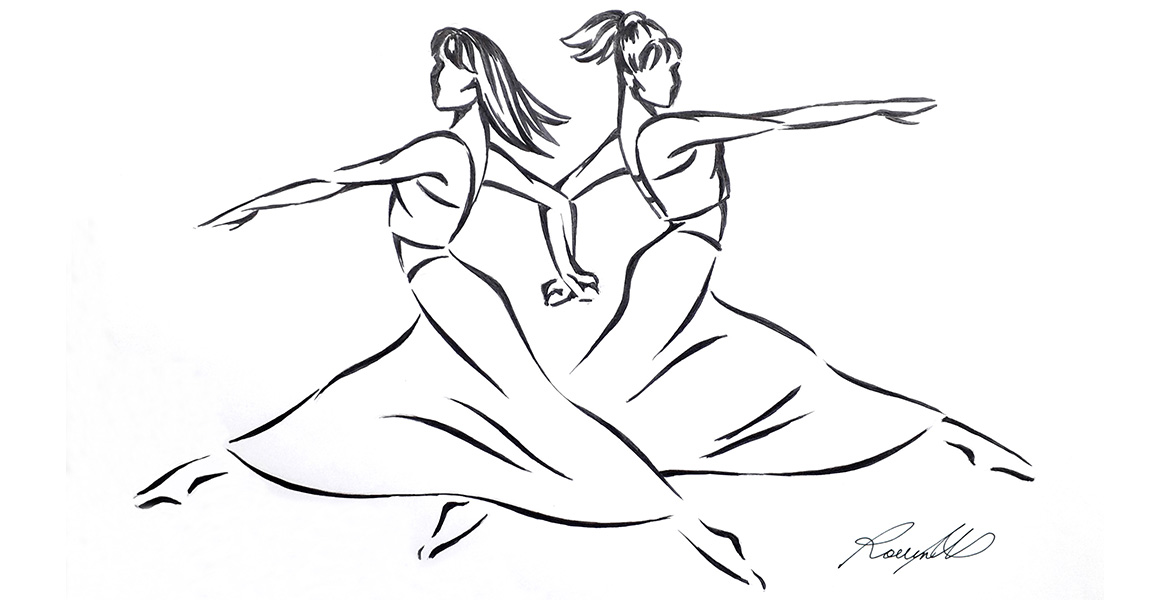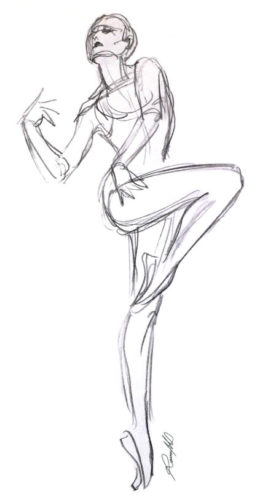The art of dance is beautifully captured with stunning illustrations by trained dancer, dance writer and artist Rowena Marella-Daw. We are proud to have Rowena as part of our #WonderfulTeam who brings her dance experience, passion and talent to her dance reviews and interviews.
Her gift with words to express the beauty of dance, is matched by her artistic ability to capture dancer’s movement, their physical form, the flow of their costume and their performance energy and essence. Rowena shares her inspirations, her technique and her passion for dance, ballet and flamenco:
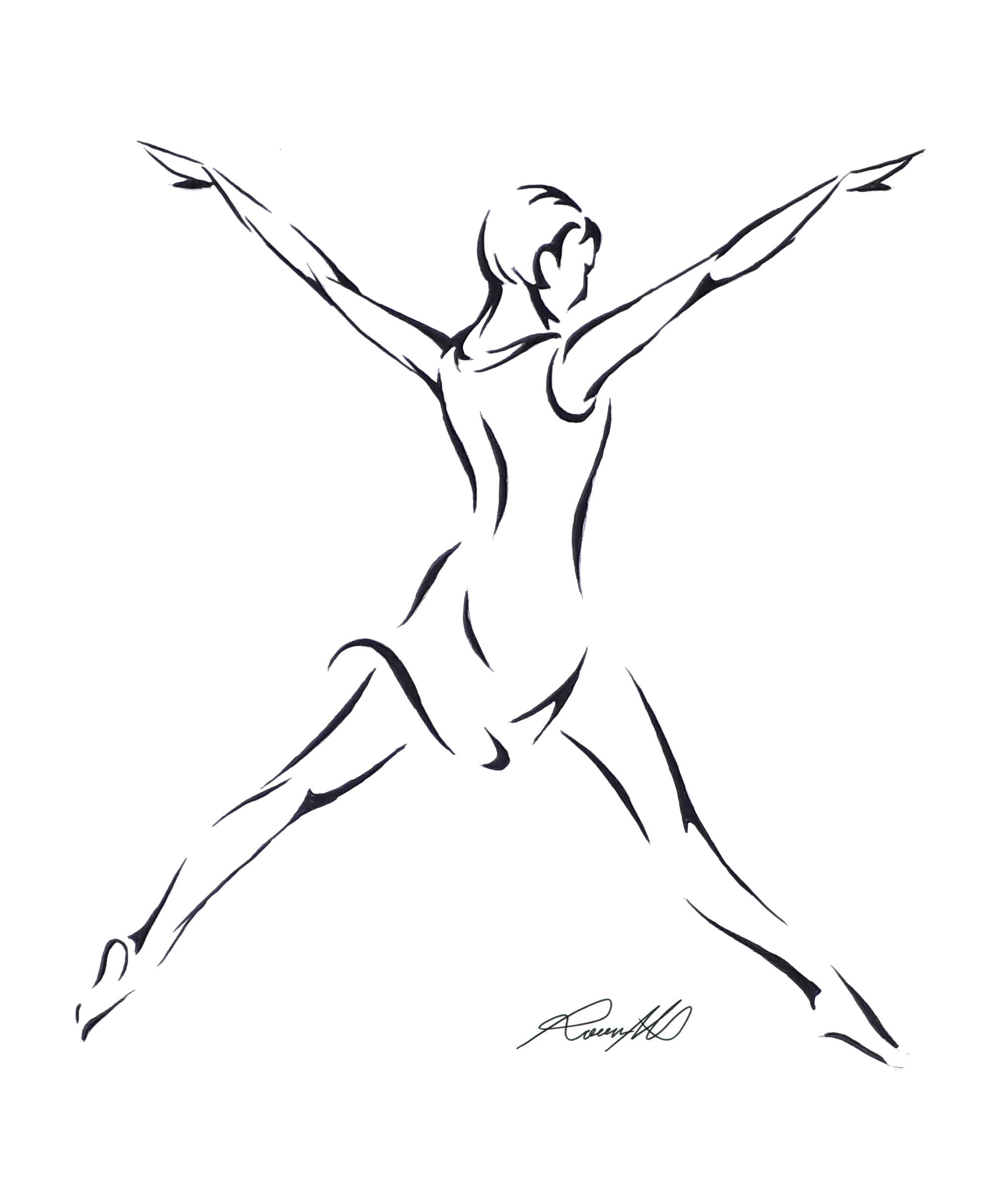 What inspired you to draw dancers?
What inspired you to draw dancers?
Dance and drawing have always been a part of my life. I took ballet lessons when I was around seven, and haven’t stopped dancing since. While living in New York, Broadway Dance Centre became a regular hang-out, where I immersed myself in ballet, jazz and contemporary styles taught by Broadway’s top choreographers, among them one of Bob Fosse’s top protegés.
Drawing was a hobby I engaged in from childhood to adulthood, but it was while working as an artist-designer in Los Angeles decades later that I rediscovered my passion for illustration. Studying graphic design, while also taking intensive classes in figure drawing and traditional animation from Disney’s top animators helped to hone my drawing skills.
Back in London, a commission from Essex Dance to illustrate choreography from contemporary dance companies for their magazine was an opportunity too good to miss. It was at this point that my love of dance and drawing finally crossed paths, and though I enjoy life drawing and character study, dance has become the main focus of my artwork.
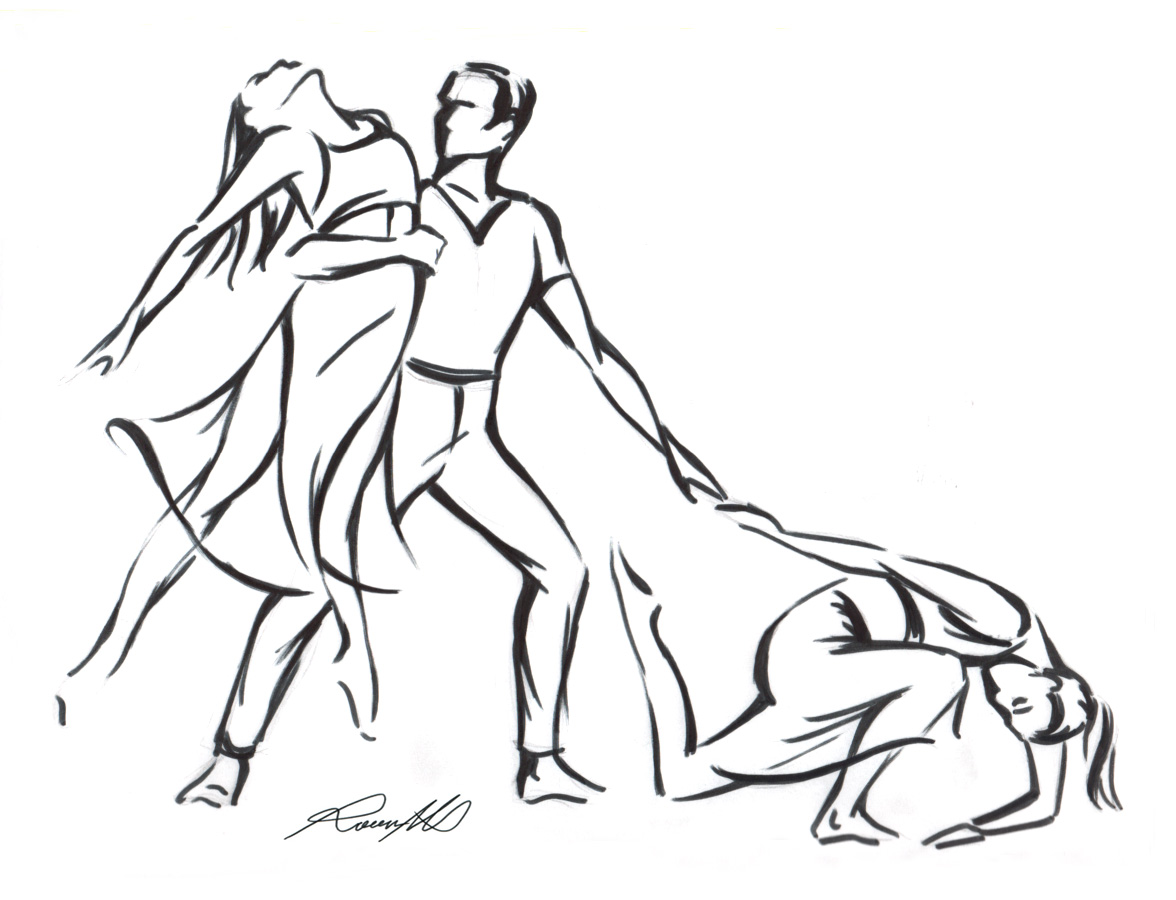 What techniques do you use in your artwork?
What techniques do you use in your artwork?
It depends very much on the subject matter and the dance form. To create quick wispy shapes I use graphite pencil, but for more precise, clean accent lines, I use pen and ink, along with dual-tipped brush pens. When I was commissioned by Essex Dance to create dance art for their magazine based on live performances, I used pen and ink to depict contemporary styles with a graphic design feel. Charcoal and pastels are brilliant for heavier strokes and blending to add tone and form, but I also enjoy experimenting with shading and colours using mixed media to add texture and contrast.
How do you approach your artwork? What is your method?
Capturing a dance movement, a figure or pose is part of the challenge – the positioning of legs, arms, fingers, tilt of the head, curvature of the body – they’re all part of the process. Inspiration can come from a video, live performance or the beautiful photo of a dancer, although I find that replicating these in fine detail doesn’t have the same impact as interpreting them in a more spontaneous way. Most of my drawings are done without the aid of photos, because I like them to look and feel more organic. I do love experimenting with various techniques and methods, and right now I’m very excited with the idea of applying my traditional animation skills to actually create ‘moving’ dance drawings, capturing the beginning, middle and end of a leap or a twirl in several frame-like drawings.
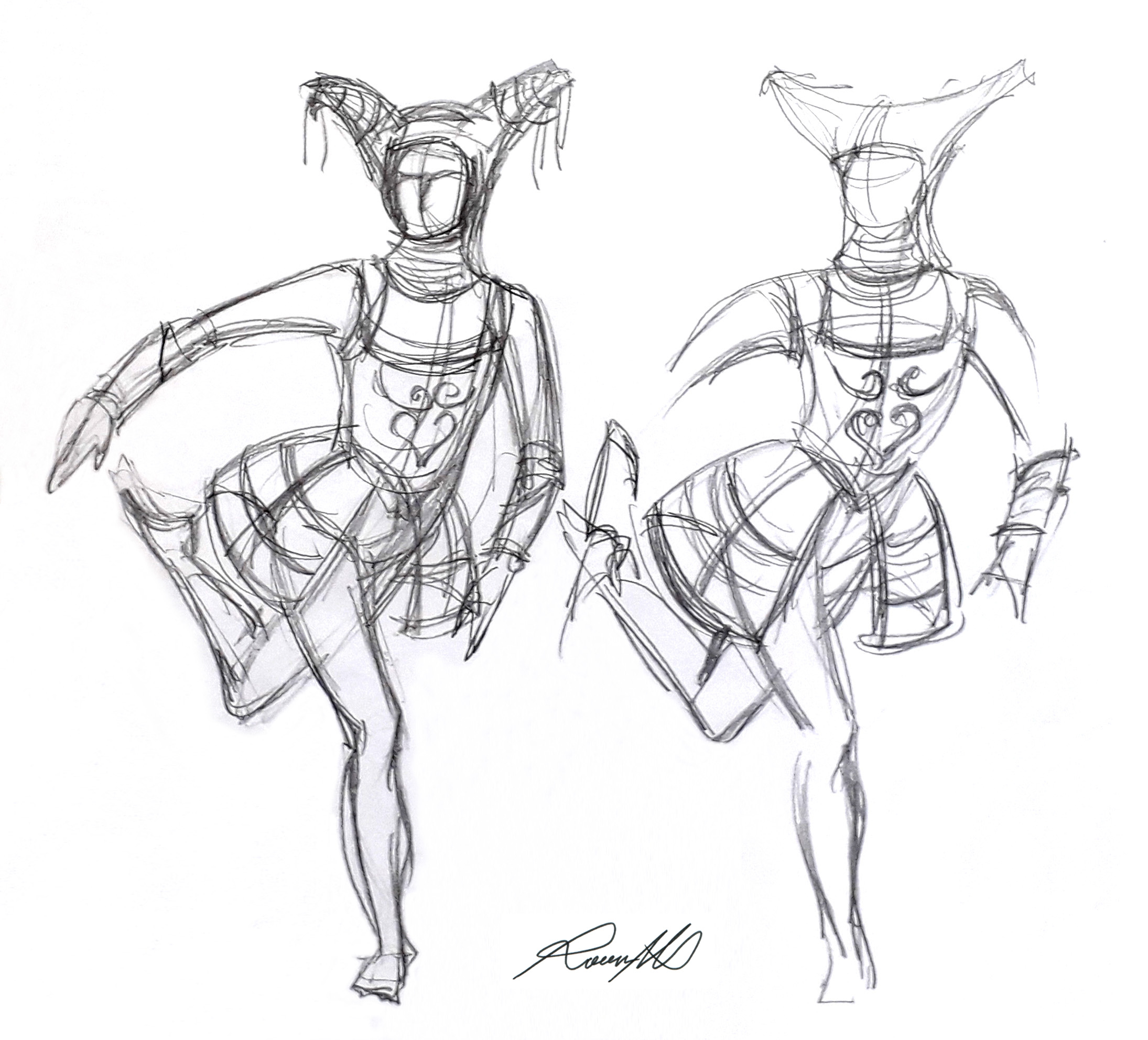 What types of dance and dancers do you illustrate?
What types of dance and dancers do you illustrate?
I’ve always been fascinated with the human body – particularly how dancers demonstrate elegant arm and leg extensions. I’m interested in dance forms that evoke grace and agility, demand sweeping movements, create shapes. Ballet, contemporary, jazz and flamenco are brilliant examples. Also, costumes, whether it’s a flowing dress or a quirky outfit, add another dimension to a dancer’s performance, which I find even more exciting to illustrate.
How do you capture the dancers’ movement when drawing live performance?
It’s not easy to draw a live performance in a dark studio or theatre. Instead, I take a visual memory of the choreography, or watch the performance video, and do a quick sketch to capture the essence of the dancer and the movement.
What are the important elements to your artwork?
Elegant shapes, coupled with character, energy and dynamism are vital elements of my dance illustrations. My animation training taught me so much about the principles of proportion and foreshortening, skills I admire most in Renaissance artists. Tamara de Lempicka’s stylised mastery of shading and Degas’ ballerinas are a source of inspiration too. But what I love most is the freedom to exaggerate, even distort elements, in order to create something extraordinary, or ‘drawing outside the box’. Through simple lines and strokes, I’m hoping my artwork will catch the imagination, maybe inspire, or even challenge! 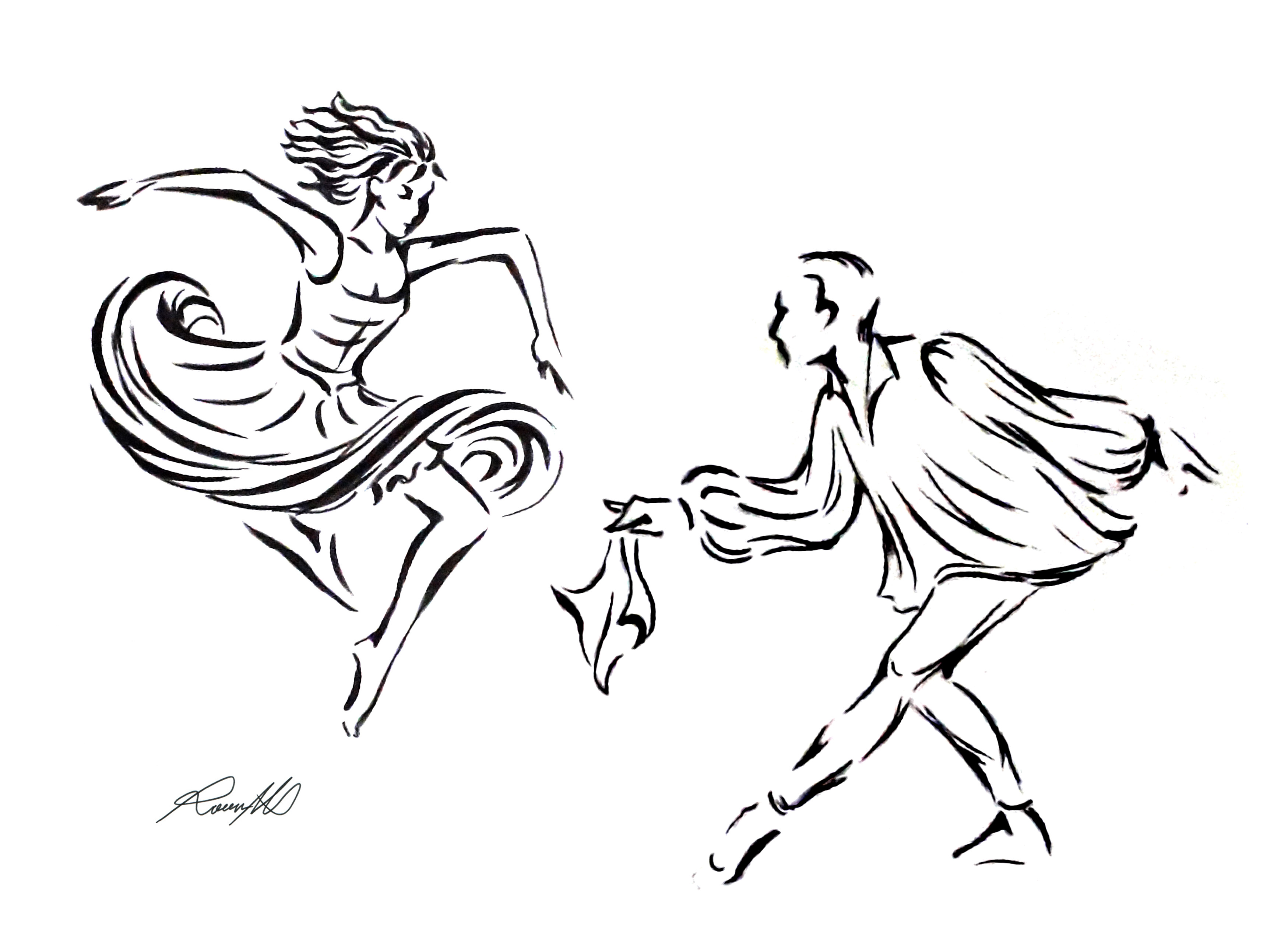
What do you love the most about dance?
Dance is probably the most primordial and organic form of art. In ancient civilisations, dance rituals were an integral part of life – and still practised in some cultures even today. Research also shows that dancing comes naturally to infants, an instinct inherent in all of us – even those with two left feet. It allows us to express our feelings, and gives us the freedom to improvise, which is why I love it. When I’m dancing, I become a different person, a feeling I’m sure most dancers share. We also know that dancing benefits our health and wellbeing. Like sports and music, dance is a universal force that unites us all, regardless of colour or religion. Without dance, our planet would be a very dull place to live.
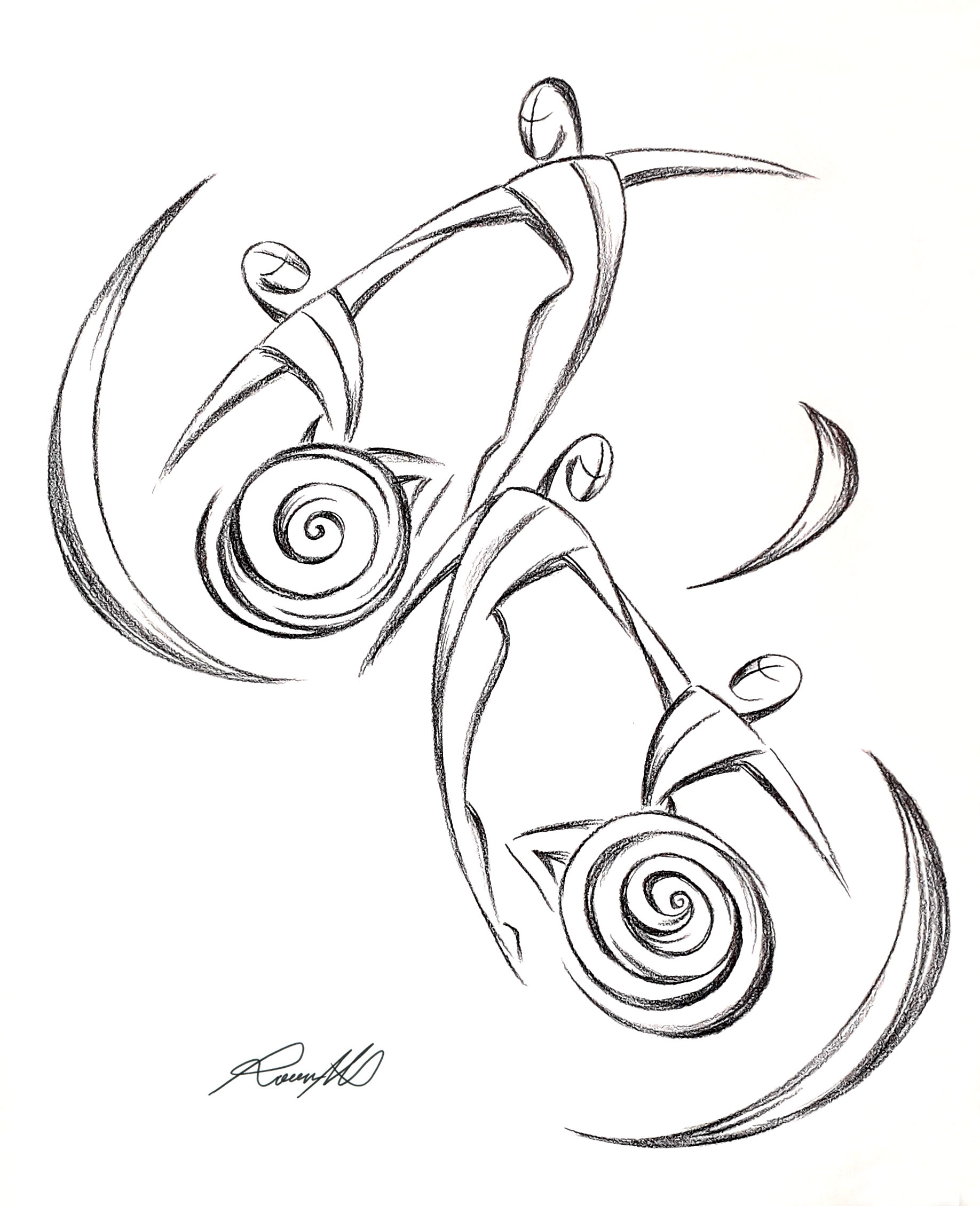 You trained as a dancer. How has this influenced your artwork?
You trained as a dancer. How has this influenced your artwork?
I’d say it’s influenced me a lot. My dance training over the years enabled me to understand the nuances of body movement – how a ballet dancer’s calf and thigh muscles look when they stand on pointe, or how the back curves when a dancer contracts their upper body. I don’t mean that to sound scientific, because most of what I do is instinctive. Often I’ll start out with just a curve, not knowing what the outcome will be. The spontaneity and artistic licence to heighten the action is actually very liberating!
As a flamenco dancer, what is important in capturing the art form?
Flamenco is a difficult dance to master. The syncopation, rhythms and techniques are just half of it. Getting to grips with the underlying emotion and passion is even harder. A true flamenco artist dances from the heart – and this is evident in their facial expressions, whether it’s joy, sorrow, anger or love. Interpreting the intensity of these emotions in my drawings is just as challenging, and I prefer to illustrate them not in minute detail, but merely by suggestion, hopefully allowing the artwork to speak for itself.
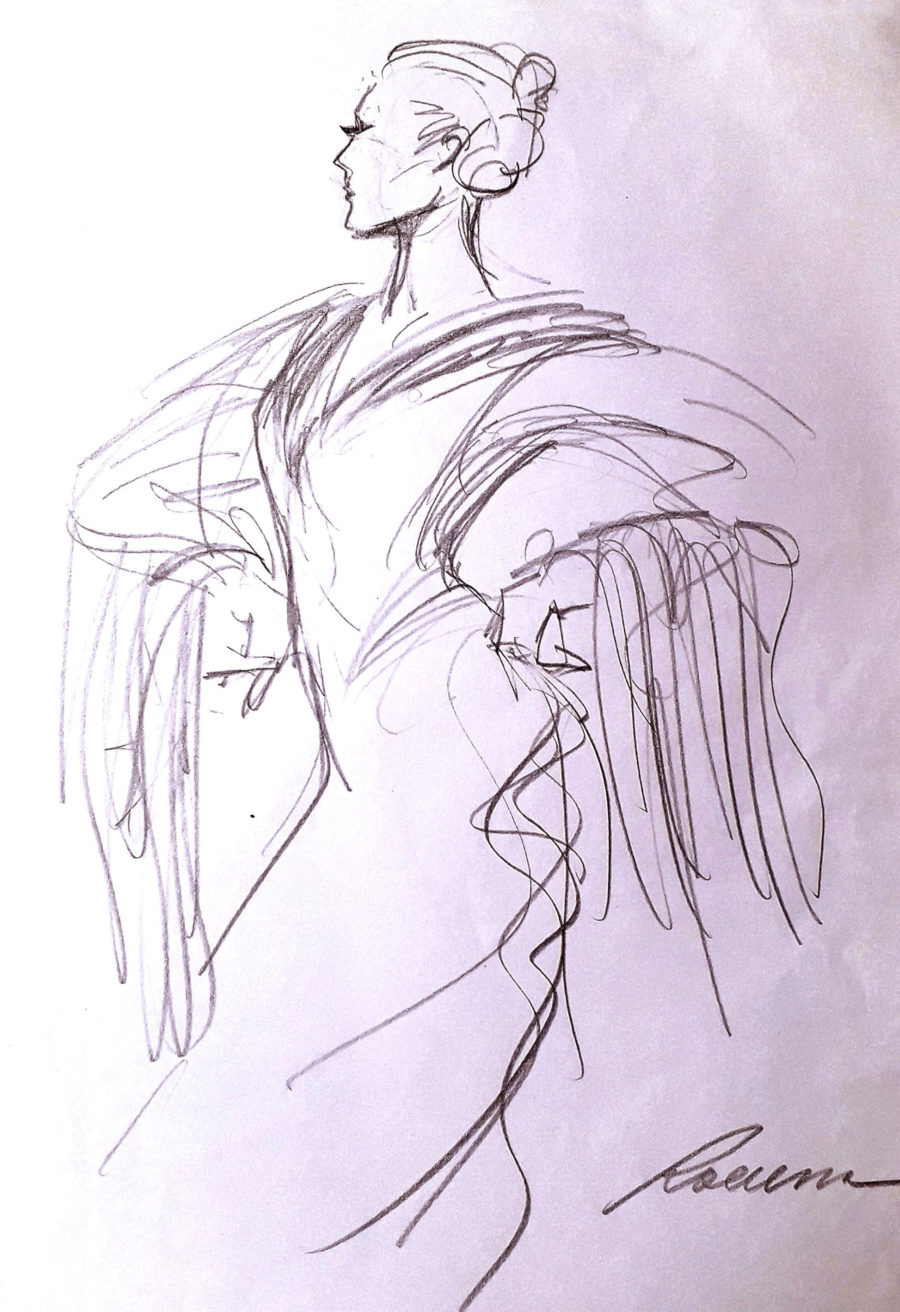
You’re a writer who also covers dance. Do you have a favourite dancer that you’d love to draw while performing live?
Carlos Acosta is on top of my list. He lights up the stage with his personality and physical prowess, and I’d like to capture the essence of his performance in my drawings. In the world of flamenco, Jesus Carmona, possesses a rare talent for blending traditional flamenco, ballet, contemporary and jazz techniques to create exciting choreography, while Concha Jareño’s earthy, lyrical style is a constant source of inspiration.
With live performances on hold and dance classes closed until recently, how have you dealt with lockdown and the impacts of COVID?
Experiencing other countries and cultures as a travel journalist has certainly slowed down, but on the writing side I’ve always worked from home, so not much change there. However, staying healthy has become a priority. Also, not being able to take regular flamenco classes nor attend live dance performances has left a huge void, so dancing in the living room to all sorts of music and occasionally watching online dance performances and workshops helped. Above all, the lockdown opened up an opportunity to channel some creative energy into my dance drawings – and it was therapeutic.
About Rowena
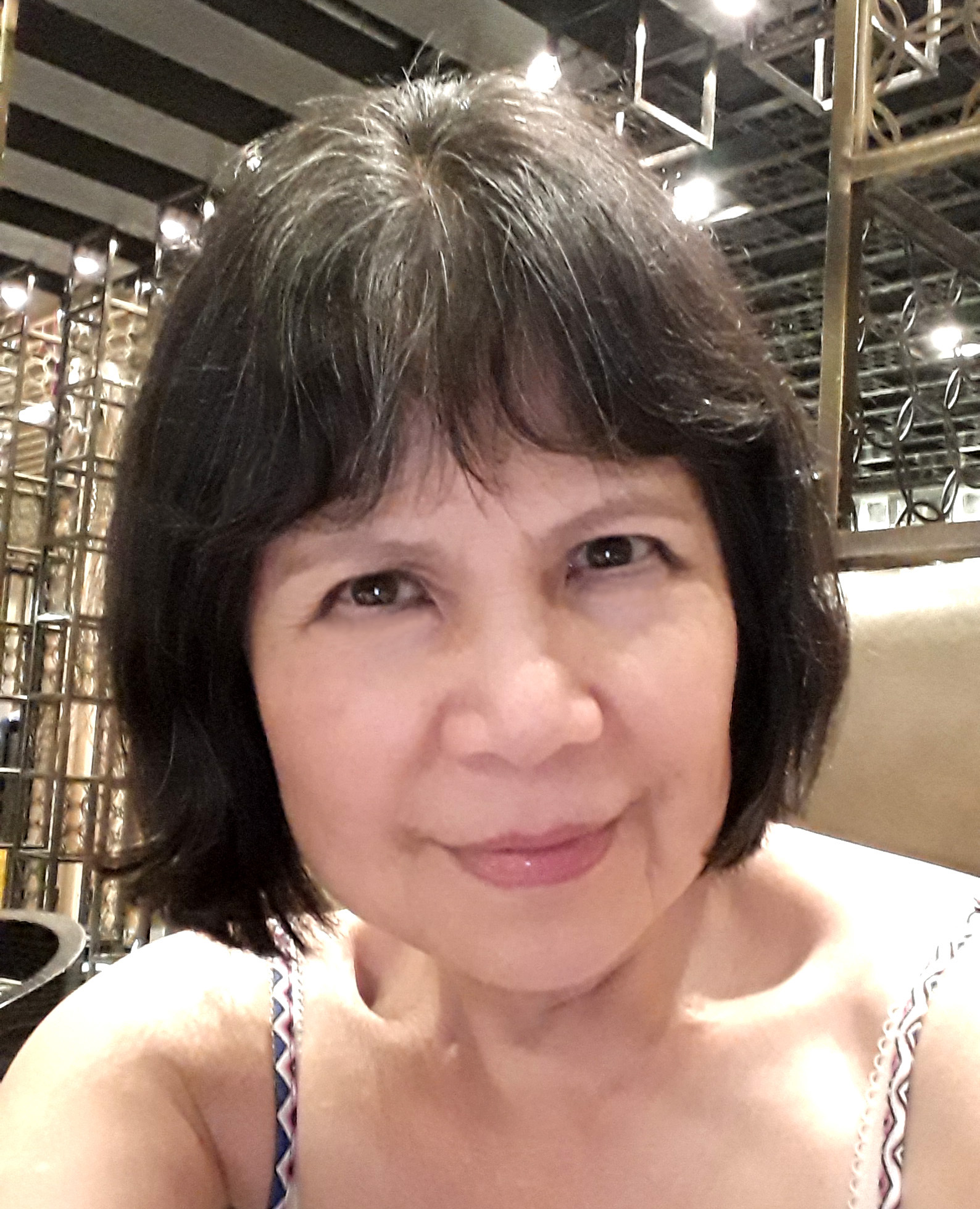
Growing up in the Philippines, Rowena started drawing at an early age and spent her summer holidays taking art workshops alongside classes in ballet and Tahitian dance. Women in fashionable outfits were favourite subjects – also designing her own clothes and creating fashion sketches for her seamstress aunt, who made elegant evening gowns for top couturiers.
Graduating with a Business degree, Rowena relocated to New York City, where she worked at the United Nations for eight years. In the evenings and weekends, Broadway Dance Centre became a favourite hang-out, where she immersed herself in ballet, jazz and contemporary styles taught by Broadway’s top choreographers, among them a Bob Fosse protégé.
Moving to Los Angeles years later, Rowena was able to apply her drawing skills as a Design Supervisor in the garment industry. During this four-year sojourn, she studied graphic design, while also taking figure drawing and traditional animation classes taught by Disney’s top animators.
After finally settling in London with her husband, Rowena took on the role of Assistant Animator, which involved hand-drawing every step of a character’s movement from one point to another. Major projects she worked on included Warner Brothers feature animations “All Dogs go to Heaven” and “Space Jam”, as well as UK film, TV and advertising projects.
It was during this period that she first discovered flamenco. Learning the technique from Spain and London with top choreographers, and long-time mentor, Juana Jimenez. It’s the fiery dance form she’s been watching, dancing and performing ever since! This, and all of those earlier dance experiences, have influenced her artwork right up to the present day.
Rowena’s writing journey started at EMAP Publishing, where her role as Website Producer-Designer included writing travel reviews, a road that led to her becoming Features and Travel Editor for a leading wedding magazine. For the last 18 years Rowena has been busy as a luxury travel and lifestyle writer, contributing to high-end print and digital publications in the UK and overseas. But throughout, her other two passions – dance and drawing – have remained constant companions.
While Covid-19 has seen many reshape their careers, the lockdown offered a chance for Rowena to revisit her art portfolio, further developing a distinct style that captures the energy and immediacy of dance movements. And while she continues with her travel writing career, Rowena is looking to illustrate for dance companies, dancers, cultural projects and publications.
Get in touch with Rowena: Row_md@yahoo.co.uk

